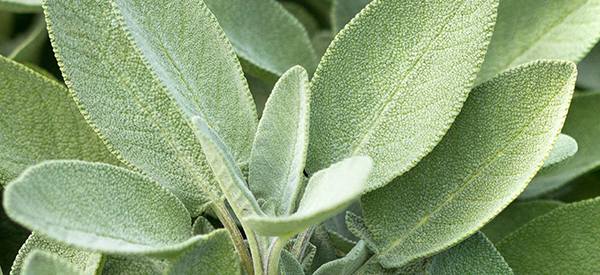
Sage
Sage (Salvia officinalis) is from the mint family of plants. The family, Lamiaceae, or mint family boasts a wonderful assortment of culinary herbs. This includes gorgeous and delicious herbs like oregano, rosemary, basil, and thyme. It also includes mints such as spearmint and peppermint.
As members of the mint family of plants, sage is incredibly attractive to bees and butterflies. It is notable for providing nectar to bees which results in exceptional honey production.
Sage, with other members of the mint family of plants, are often recognizable by the virtues of aromatic leaves and stems which are square or four-sided. Also of note, salvias are the largest genus within this family which includes almost 900 salvia species.
Sage has been domesticated throughout the world. Its origin is Northern Mediterranean areas as well as the Middle East. It is known as an incredibly versatile herb. It is often used fresh, dried, or ground. It has many uses. Notably, it adds a fresh, earthy flavor to many dishes including soups, stews, as well as flavoring meats, sausage, and poultry. Sage also makes a wonderful invigorating tea.

The History of Sage
This remedy has been used by people as food and medicine for millennia. The ancient Romans used sage to aid digestion, particularly aiding the digestion of fatty foods including fatty meats. They also kept it as a sacred ceremonial herb. It was used for preserving foods, including meats. To this day, poultry and sausages are commonly flavored with sage.
Throughout its history, the cultivation has remained important for culinary and medicinal purposes in both Western and Eastern cuisines and medicines. Its name, Salvia, is even reminiscent of the word salvation. It has been notorious throughout the ages for its ability to impart wisdom, health, virtue, and even immortality.
Where the Plant is Found
Salvia officinalis originated in the Middle East and the Mediterranean. Sage is now cultivated throughout the world. Sage is an unlikely suspect to become a weed problem. For this reason, the best places to find this aromatic plant are in the herbal, vegetable, or ornamental garden. It is also often found in herbal preparations, at the greengrocer, dried for tea, or dried and ground to use as a flavorful herb.
Related: The Complete Map of Edible Plants: Find Out What You Have in Your Area! (Video)
How to Identify Salvia officinalis
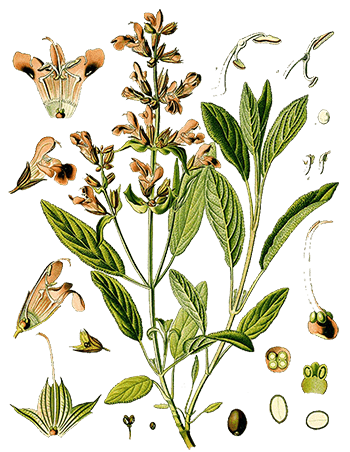
- Shape: Sage grows as a small perennial subshrub. It reaches 1 to 2 feet tall, and 2 to 3 feet wide. It may remain compact with regular harvesting.
- Leaves: The leaves of sage are gray-green and woolly. They are thick, oblong, opposite, with pointed tips. Strongly aromatic, the leaves reach 2 to 3 inches long.
- Flower: Flowers bloom in late spring on upright spikes. They appear in whorls and are two-lipped, lavender-blue, and up to 1 inch long.
- Stem: Stems are square and covered in fine hairs. They are semi-woody and grayish-green in color.
- Fruit & Seeds: The tiny seeds are black or dark brown and round in shape.
Related: 400 Wild Plants That You Can Forage For (Video)
How to Grow
The easiest way to grow sage is to purchase small plants. Those plants love full sun, dry to medium conditions with very well-draining soils. Soil does not need to be rich. In fact, poor soil that is sandy or gravelly is suitable. It does not like to be kept in wet heavy soils.
 Pinching sage plants will help them branch out nicely. They benefit from pruning after they flower, which helps them stay tidy but they do not like to be pruned late in the season.
Pinching sage plants will help them branch out nicely. They benefit from pruning after they flower, which helps them stay tidy but they do not like to be pruned late in the season.
To propagate sage plants, they can be started from seed. They also root well from cuttings or can be propagated by layering. Side branches may put down roots which can be trimmed from the parent plant to start new plants, as well.
Sage is a short-lived perennial. It is recommended to replace plants every few years. They also thrive when planted near rosemary, cabbage, and carrots. These plants are not friends with plants of the cucumber family.
Related: The 10 Medicinal Seeds You Should Plant for a Complete Backyard Pharmacy (Video)
How to Harvest This Plant
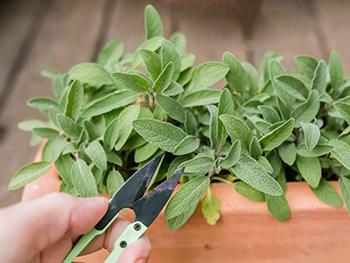 Sage is best harvested before the plant is in flower. Also, similar to many other herbs of Mediterranean origin, it’s best harvested in the heat of the day. This is when the volatile oils are strongest in the leaves.
Sage is best harvested before the plant is in flower. Also, similar to many other herbs of Mediterranean origin, it’s best harvested in the heat of the day. This is when the volatile oils are strongest in the leaves.
To harvest, simply pinch or snip leaves and branch tips. This will enable the plant to continue to branch out, providing more leaves and flowers for future harvests. The young tender leaves are thought to be more flavorful than older leaves.
Flowers can also be harvested to use fresh or dried. These are best harvested early in the morning before the bees and beneficial insects are at them.
What Sage Is Good For and The Natural Remedies Made From It
Briefly, Sage is nutritious, high in antioxidants, and anti-infective. Here is a deep dive into all the things this herbal remedy is potentially good for.
- Digestion: It aids the digestive system, traditionally eaten with heavy, oily foods. The tea made with fresh or dried leaves is thought to improve digestion. There is evidence that it helps with symptoms of mild dyspepsia including heartburn and bloating.
- Oral health: Due to the antiseptic compounds in sage, it is often an ingredient in oral health care products. Using it to make a mouth rinse or gargle may aid inflammation of the mouth, gum disease, and sore throats. It may also help relieve toothache pain.
Related: Do This Before Going to Bed To Rebuild Your Gums (Video)
- Brain function: There is evidence that it has shown positive outcomes in cases of age-related cognitive decline and mood. Sage improves memory and cognition. Interestingly, intake has also shown increased contentment, calmness, alertness, and elevated mood.
- Lower blood sugar levels: In various studies, it has shown evidence of providing hypoglycemic protection for people with type 2 diabetes. Drinking sage tea throughout the day and using essential oils may provide support for people with diabetes.
- Lower cholesterol levels: Using sage as a food supplement may also reduce LDL or bad cholesterol. At the same time, it shows evidence of raising HDL or good cholesterol levels.
- High in antioxidants: Antioxidants help defend our bodies from oxidative damage. Sage, incredibly, shows 160 distinct chemical compounds which act as antioxidants for the body. Just 1 cup of herbal tea twice a day improves the body’s antioxidant defense system!
Related: The Plant That Is Sweeter Than Sugar And Helps People With Diabetes (Video)
Additionally, Salvia officinalis shows many other positive effects which include anticancer, antispasmodic, antidementia, hypolipidemic, antimicrobial, and anti-inflammatory properties.
What Parts of Sage Are Used In Remedies?
Most notably, the leaves of sage are used in remedies. Some herbalists feel purple sage, or Salvia officinalis ‘Purpurascens’, which has a purple tinge to the young leaves is stronger in medicinal properties. The flowers and stems of Salvia officinalis may also be used in remedies.
A DIY Recipe
Sage Infused Oil and Sage Infused Vinegar
Method
Step 1: Find young sage leaves ready for harvest. This is a young plant and its first harvest. It has not yet bloomed. The harvest is best in early summer during the hottest part of the day. This ensures the highest quality of volatile oils in the leaves.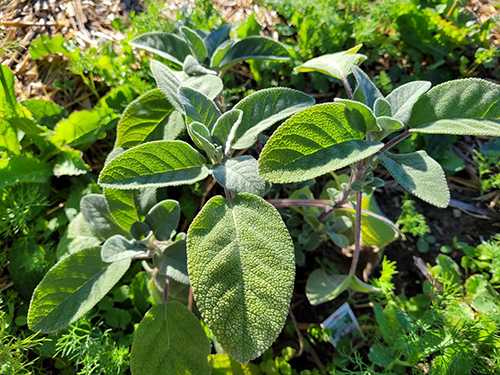
Step 2: Harvest the youngest leaves from the plant. Pinch or cut off the terminal leaves above the next to leave nodes. Note the two new emerging branches just below the cut. This harvest has two benefits. The first, the gathering of fresh young leaves. The second, pinching back the sage plant will help it bush out more. This will result in more stems, more leaves, and more flowers.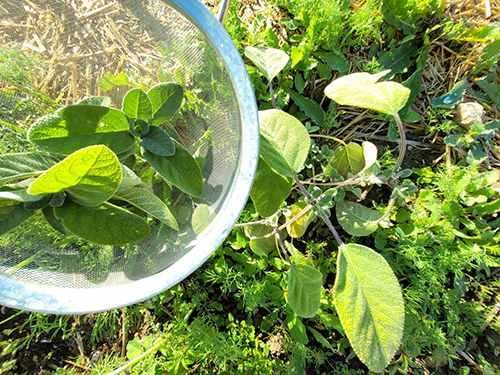
Step 3: Gently wash the leaves and stems. Separate the leaves from the stems by pinching or trimming them off.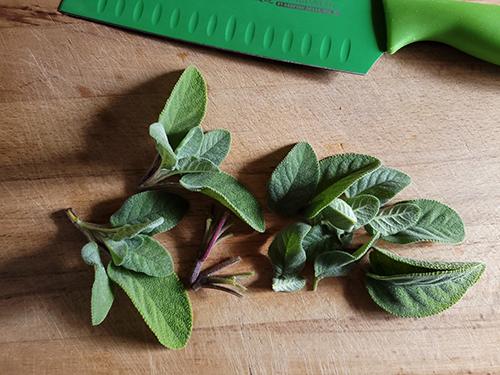
Step 4: The leaves are thick, soft, furry, and durable. They chop up nicely and uniformly. Much like kale or spinach, stacking the leaves together makes them easier to chop.
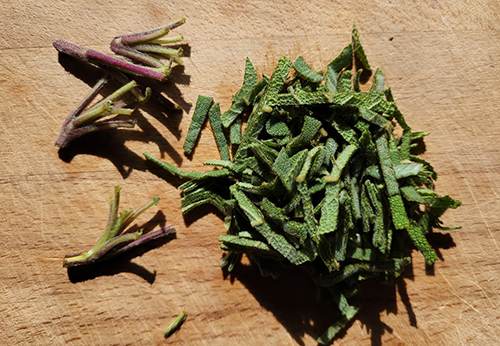
Step 5: Divide the chopped sage equally into 8-ounce jars. This is about 2 ounces or ¼ cup of sage per jar. The jars are glass, preferably. They have been washed and sterilized.
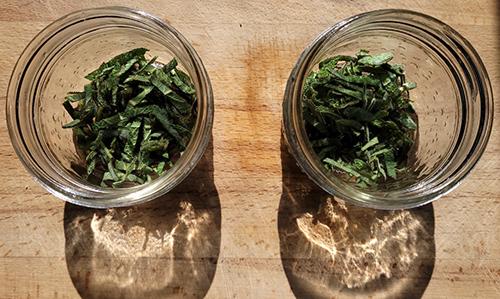
Step 6: Using the best quality vinegar you have, fill the jar with vinegar. This vinegar is a lovely white wine vinegar. The vinegar will be infused with earthy, aromatic sage leaves.
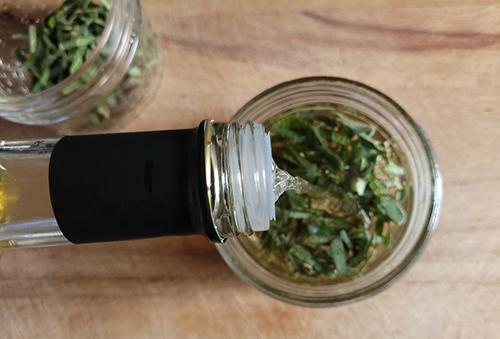
Step 7: Fill the other jar with the best quality salad oil you have. I’m using organic extra virgin olive oil. Other great salad oil choices are grapeseed, sunflower, peanut, or avocado oil.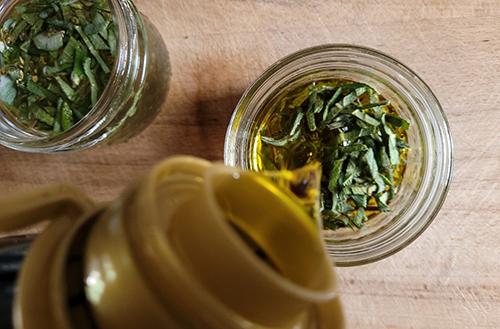
Step 8: Allow the sage to infuse into the oil and vinegar for 3 to 7 days. Longer if desired, up to two weeks. Remove the sage leaves to enjoy the lovely sage oil and sage vinegar as ingredients in salad dressings and marinades.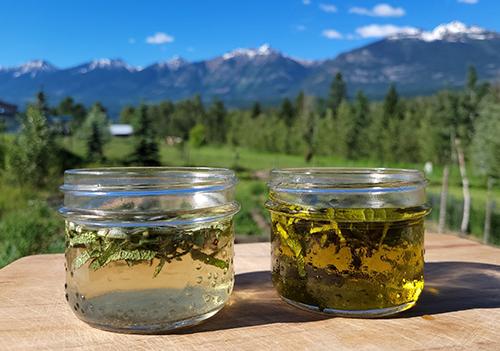
Potential Uses
Perhaps the obvious, our sage-infused oil and vinegar combination is ready to elevate the next homemade salad dressing adventure. Similarly, the combo or each individual infused oil and vinegar might add that extra tasty splash to marinades, dips, and sauces.
Other uses would be to use the oil as a drizzle over baked or roasted meat and vegetable dishes. Similarly, the sage-infused oil may be used as a dip or drizzled over other dips such as hummus or tzatziki.
Sage-infused oil may also be an ingredient for making skincare preparations such as salves or balms. Sage is particularly well known for its antimicrobial properties so is an excellent component in wound-care products.
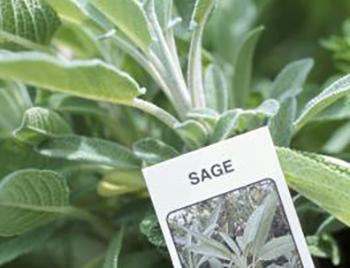
The sage-infused vinegar may be added to tonics or beverages, adding a healthful zing.
Just a cup or two a day of sage tea may have many beneficial contributions to health. It is easily added to the diet as a seasoning as well. Including more sage in the diet may help take advantage of the many nutritious, digestive, antioxidant, and inflammatory properties, to name just a few.
It is recommended to not exceed more than 6 cups of sage tea per day. Similar to starting any new supplement, start with a small amount and gradually increase this amount. Always listen to your body to ensure no adverse effects transpire.
How To Preserve This Plant
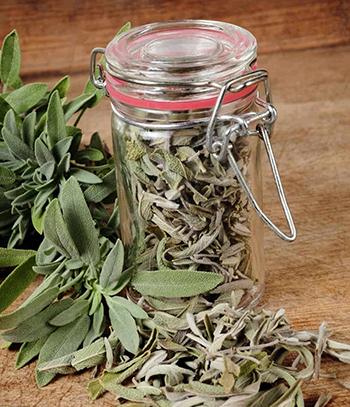 Beyond preserving sage as an infusion in oil and vinegar, it might also be infused in honey or even water, as tea. It might also be made into an elixir or strong tea, leaving it to steep for 24 hours or several days.
Beyond preserving sage as an infusion in oil and vinegar, it might also be infused in honey or even water, as tea. It might also be made into an elixir or strong tea, leaving it to steep for 24 hours or several days.
For long-term storage, and for making products that have a longer shelf life, sage is excellent as a dried herb. Notably, drying whole leaves retains more flavor. Dried sage is also perfect for making tea.
Debatably, frozen sage might be even better. Freezing sage holds on to the earthy warm flavor well. Freezing whole leaves and transferring them to freezer bags or containers is one way. Another is to blend the leaves, either on their own or in oil. The blended sage can be frozen in ice cube trays or in individual balls before putting in freezer bags or containers, ready for use.
What Plants Resemble Sage?
| Feature | Sage, Salvia officinalis | Prairie Sagewort, Artemisia frigida | Woodland Sage, Salvia nemerosa |
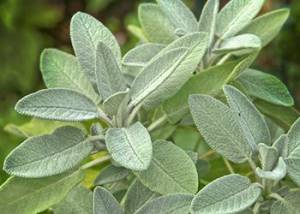 |
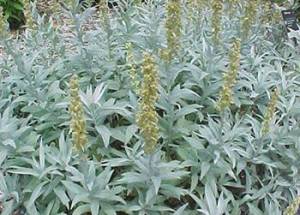 |
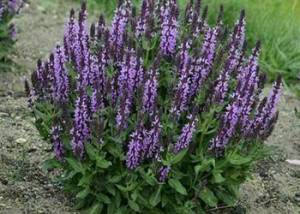 | |
| An edible and medicinal herb cultivated in the vegetable, herb, and ornamental garden. | A medicinal dry-land herb native to North America. | A species of Salvia grown as an ornamental flowering perennial. | |
| Size | 1 to 2 feet tall and 2 to 3 feet wide | 1 to 3 feet tall. | 8 to 24 inches tall. |
| Leaves | Woolly, gray-green leaves 2 to 3 inches long, oblong with pointed tips. | Lobed gray, green leaves. | Small lance-shaped leaves. |
| Flowers | Upright spikes with whorls of lavender-blue flowers. | Small yellow flowers on branching stems. | Multiple spikes of purplish-blue blooms from June to September. |
| Stems | Square stems are covered with fine hairs. | Multiple branches grow from the base and are heavily branched, woody with age. | Clump-forming square stems. |
Warnings And Cautions
Sage is reportedly very safe to eat. There have not been any side effects reported. It is worth noting that consuming too much sage tea or consuming too much sage essential oils may have some adverse effects. Try to start with small amounts while gradually increasing the amount over time to ensure no adverse health effects. It may be recommended to limit sage tea to 3 to 6 cups per day.
Sage is considered safe for topical use. Of course, with any new ingredient do a small skin test by placing a small amount of the leaf or oil on the skin and wait 24 hours. Any reaction such as itchiness or hives may be an indication of sensitivity. It only makes sense to practice some caution with topical use, particularly for people who suffer from seasonal allergies.
Herbal Oxymel Recipe With Sage And Ginger
Erratic Blood Sugar? Never Eat This Veggie (Video)







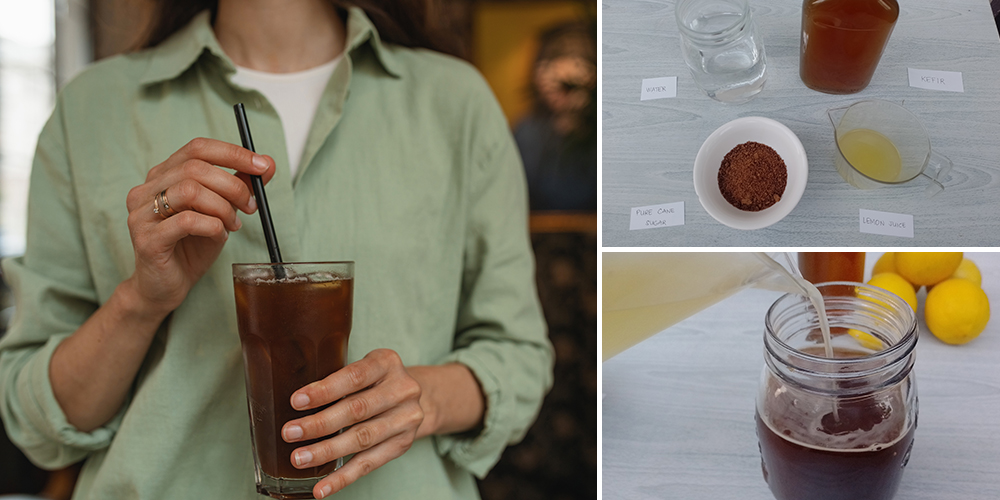

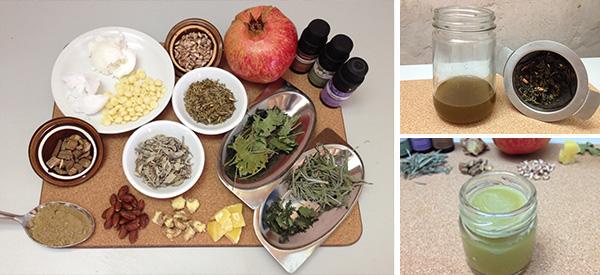
I believe Sage is a NO NO during pregnancy. Great for mouth sores too
Sage is wonderful! I’m so happy to learn more about it. My mom has several types of sage planted in her front yard. One of them has red flowers, which I did not find in this description, though I’ve tried it in cooking and incense and had no troubles with. I wonder if it’s a different variety, or perhaps a related plant that isn’t actually sage? She has two plants that are rather old and starting to look a bit scraggly, so the information about replenishing the plants is good to know.
Hi Wendy,
Thank you for your interest in our work.
There are more varieties of Sage. Pineapple Sage and Autumn Sage have red flowers.
The plants should be identified in their environment, by looking at all their parts (leaves, flowers, color, root). There are also some useful apps out there to help you identify plants but always double-check the result! Good ones to try include: Picture this, PlantNet and PlantSnap.
Many blessings and good health!
How much sage should one use when making sage tea?
Good question. I don’t have a specific answer; I’d say, if you’re dealing with fresh sage leaves, play around with how strong to make the infusion until you’re satisfied. I like the little mesh teaballs that hold about a tablespoon of leaves, and I mix and match whatever strikes my fancy at the time; sage pairs well with many different flavors, and so many herbs have so many various health benefits, it’s a rabbit hole I could spend the next two lifetimes exploring! If you’re not using premeasured teabags, it’s easier to reuse the leaves several times that way–just allow them to dry out fully so they don’t get moldy or whatever. Hope my rambling helped a little!
Also good for balancing hormones. Hot flushes in particular.
Hi Precila,
Thank you for your comment.
Yes, indeed. Women have used it for treating menopausal symptoms and balancing hormones for generations.
Many blessings and good health!
I make a infusion from sage, rosemary, thyme and olive leaves. I make a big pot, drinking it over several days (once cooled, I add lemon juice and it makes a refreshing cold drink) It has a nice smooth taste and is anti inflammatory, anti bacterial and immune system boosting 🙂
my Dad always used home grown sage in his home made pork sausage which was then smoked in the smoke house. Wish I had been observant enough when younger to learn how it was made.